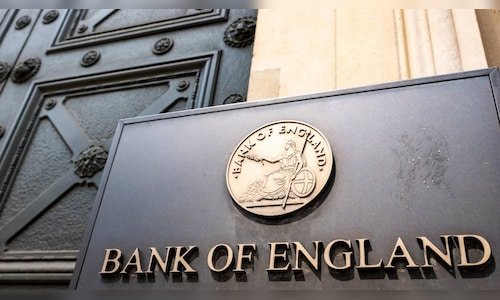
In its first advance estimates for FY25, the National Statistical Office (NSO) projected India’s GDP growth at 6.4%, marking the slowest in four years. These numbers are crucial as they serve as the foundation for key decisions in the upcoming Union Budget 2025.
Also Read: Why the GDP advance estimates are important
However, both economists see growth marginally picking up in 2025-26 (FY26).
Gupta projects a real GDP growth rate of 6.7%, driven by rural consumption and government-led investments. However, she cautioned against expecting a broad-based private capital expenditure recovery, citing moderate domestic demand and global overcapacity.
Bhandari shares a similar outlook, pegging FY26 growth at 6.5%, which aligns with India’s long-term potential growth rate. “We are now coming back to potential from 2025-26 onward,” she remarked, adding that the growth seen in the past two years was an anomaly.
These are the edited excerpts of the interview.
Q: Are you in line with 6.4% (MOSPI advance estimate)?
Bhandari: Broadly, share the sentiments that it’s going to be lower than we have seen in the last couple of years, but when you look at the exact numbers, we are closer to 6.2%, so slightly lower than the advance estimate. The reason is, while we do think that second half will be better than the first half, we think the degree of improvement will not be as strong as what the central statistics office (CSO) has come out with.
Q: Sakshi are you okay with 6.4%?
Gupta: We were estimating 6.4% for the full year, and 6.7% for the second half. Based on a lot of the high frequency indicators that we have up till November,. According to me, 6.5% in the second half seems achievable at this point.
Also Read | Bank of Baroda’s Madan Sabnavis sees conservative GDP estimate, predicts upside revision
Q: Given the kind of a capex growth and consumption, how will you estimate growth in 2025-26?
Gupta: Our estimate for 2025-26 is that growth is going to marginally increase to about 6.7% from 6.4% this year. As we earlier discussed, there will be some cyclical improvement in consumption, that is going to play out primarily coming from the rural sector. On the investment side, 2025-26 is going to continue being a story where a lot of the investment is being pushed by the government, both the center as well as the state.
I don’t see a very broad-based pickup in private capital expenditure. I think there are a host of issues here, from moderate demand in the domestic market, and a lot of overcapacity globally, in a lot of key sectors. Some of these risks, at least on the global side, are not going to abate, but in fact, increase next year.
Q: Pranjul what is your estimate growth in 2025-26?
Bhandari: 6.5%. For a while we have been seeing that India’s potential growth is 6.5% and we are now going to come back to potential from 2025-26 onward. From that sense, the last two years were actually a bit of an exaggeration.
Q: Sakshi how do you see next year’s nominal GDP? Can they take it up to double digits at all or will, will it have to be like this year’s, 9.5% or thereabouts?
Gupta: Given 6.7% real GDP growth forecasts that I have, and retail inflation at about 4.2-4.3%, I would expect nominal GDP to be somewhere around 10.5% for 2025-26
Q: Pranjul your estimates of nominal GDP?
Bhandari: I am in line with the advanced estimate number for nominal GDP growth of 2024-25 which is 9.7%. But for 2025-26, assuming a 10.5% run rate like we had assumed in the last year, will lead to disappointments. I am saying this because real GDP total forecast for me, for 2025-26 as I said, was 6.5% and I am working with a deflator, which is about 3.5%, and that adds up more to 10%.
3.5% makes sense, you have a WPI, which, even if it increases, will average about 3% and then you have a CPI, which will average about 4%. So I just don’t see GDP deflator being any higher. So my sense that any higher number than 10%, by the government will only lead to disappointment.
For full interview, watch accompanying video
Also Read | India’s GDP in 2025: Manufacturing sector to be hardest hit, agriculture growth seen at 3.8%



